Chapter 3
Discovering Your Business Model and Brand
IN THIS CHAPTER
 Discovering the “Jobs To Be Done” concept
Discovering the “Jobs To Be Done” concept
 Understanding what drives revenue
Understanding what drives revenue
 Uncovering what your brand means
Uncovering what your brand means
 Recognizing brand goals
Recognizing brand goals
You may be asking yourself why a book about digital marketing strategy has a chapter about business models and brands. There’s a good reason for that. You can’t really begin to determine your content marketing strategy until you determine how your company generates revenue and retains loyal customers. After you understand that, you’ll know what your customers find valuable in terms of products and content. You’ll be able to deliver the kind of content that keeps your customers engaged and buying.
Oddly enough, some companies don’t really understand the business they’re in. That may sound counterintuitive, but it’s true. Your company could be one of them. Many C-level managers fully understand what their product does, but not what “job” (or jobs) it does for their customers. If you don’t know what job your customers are hiring your product to do, you won’t fully understand what your customers want.
In this chapter, you look at what you need to know about your own business model and how to present your brand effectively.
Separating Your Business Model from Your Brand
This section starts by defining two important concepts: business model and brand. After looking at the meaning of each of these concepts, you’ll find it easier to effectively address each one.
- Your business model: Your business model describes how you make money. This concept is inward facing, meaning that you look inside your company to see what drives your revenue. You consider operations, suppliers, and all the things that go into delivering a sound product.
- Your brand: Your brand is what your company means to your customers. Regardless of how you make your money, your brand is defined by the connections it makes in the minds of your customers. You take into account things like customer data, retention, and buying habits to determine what your brand stands for. You can declare what your brand means to your customers, but you can’t make them believe it. They tell you. On social media, this message is amplified a hundred-fold.
Here’s an example of how a business model and a brand go hand in hand. Apple (http://apple.com) makes its money by selling electronic gadgets that help consumers do things, such as communicate with the world in myriad ways. Apple's current mission statement reads as follows: “Apple designs Macs, the best personal computers in the world, along with OS X, iLife, iWork and professional software. Apple leads the digital music revolution with its iPods and iTunes online store. Apple has reinvented the mobile phone with its revolutionary iPhone and App store, and is defining the future of mobile media and computing devices with iPad.”
When you buy an Apple product, you find that it employs cutting-edge design and performs well. This helps you see the value of purchasing other Apple products, like an iPad or a MacBook Air. Why? Because they work seamlessly together. Furthermore, you see the value of using the iTunes store to buy apps that work with your products. Apple would be a successful company by virtue of the products it creates. But by making its products work together in their own “ecosystem,” Apple has created a strong business model that makes it the world’s most valuable brand, according to Forbes (https://www.forbes.com/sites/kurtbadenhausen/2018/05/23/the-worlds-most-valuable-brands-2018/#7aae8c14610c). Almost no one disagrees.
So what does the Apple brand mean? To understand that, you have to look at Apple customers. They are extremely loyal and see themselves as belonging to a world-wide community of people who think differently. They have a relationship with the company that can’t easily be damaged. They stand in long lines to wait for newly released products, hoping to be able to snag the latest model.
Apple clearly understands the role its products play in the life of its customers. Do you understand your company’s role? This understanding is critical to being a successful company. If you don’t understand the brand value of your company, you will have weak content marketing efforts.
Understanding the business you’re in
To understand the role your products play in the life of your customers, you need to grasp the concept of Jobs To Be Done (JTBD). It was developed by Clayton Christensen, who is well-known for his theories on corporate innovation and disruption. As his website explains, “Customers rarely make buying decisions around what the ‘average’ customer in their category may do — but they often buy things because they find themselves with a problem they would like to solve.”
Christensen illustrates how companies can find the solution to the JTBD problem by detailing how he dealt with this problem for a fast-food company. After analyzing its customers’ demographics and asking them about their favorite milkshake ingredients, the marketing department of a fast-food company still couldn’t figure out how to increase milkshake sales. The company asked Christensen to help. He and his team proceeded to determine what customers “hired” the milkshakes to do with extensive interviews. (You can find more details at http://hbswk.hbs.edu/item/6496.html.)
Christiansen’s team found that customers all had a similar purpose for buying a milkshake. They had long, boring commutes to work. On their commute, they wanted
- Something interesting to do with their free hand as they drove
- Something that would help them stave off hunger until 12 p.m., when they could eat lunch
These are the jobs they hired their milkshake to do. So, they bought a milkshake to serve as both entertainment and sustenance.
You can see that by framing the problem this way, the fast-food marketers could come up with unique solutions to satisfy their customer. They needed to provide a product that would do the right jobs.
With this information in hand, the fast-food company proceeded to
- Create thicker milkshakes: The company needed to offer shakes that took longer to finish so that they would last during the entire commute.
- Develop more interesting milkshakes: The company added pieces of fruit to the shake that provided a chewing experience along with the fluid.
The milkshake was already perfect for a customer’s free hand, so that aspect wasn’t changed.
Christiansen’s marketing team also uncovered some information about what parents wanted in a milkshake product for their kids. Parents wanted to buy their kids a milkshake as a treat during the day. This called for thinner children’s milkshakes that wouldn’t take too long to finish. So the fast-food company needed both thicker and thinner milkshakes on its menu.
You can see that by following the “what job is the product hired to do” line of exploration, the marketers arrived at very different solutions than they would have using a classic demographic analysis.
Mark W. Johnson (Clayton Christensen’s business partner) says that “you know an innovation is disruptive when a new population has access to products and services that previously were only affordable for the few or the wealthy” (http://blogs.wsj.com/accelerators/2015/01/23/weekend-read-disruption-is-not-about-slaying-giants-but-about-serving-new-customers/).
Looking at some popular online business models
The Internet has spawned a host of business models that couldn’t have existed before its inception. The following sections describe some of the most popular ones that don’t require a bricks-and-mortar store to support it.
Affiliate model
Affiliates are people who agree to sell a product (or service) online for a fee. The key to creating a successful affiliate business involves developing an audience interested in a particular topic and then finding and recommending products you think they will like. The less work that you put in on the effort, the less likely you will be able to sustain a business that relies on people trusting your recommendations. Affiliates can also promote one specific product and provide content that supports and enhances it.
An example of a market in which you can find affiliate products is ClickBank (http://www.clickbank.com), shown in Figure 3-1. Vendors put their products on display and list their accompanying fee for a sale.
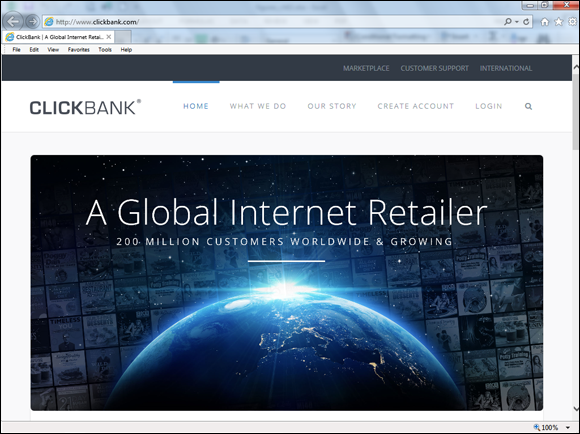
FIGURE 3-1: ClickBank offers affiliate products.
Membership model
A membership model has two characteristics. To run it, you have to
- Charge a monthly (or annual) fee
- Supply content that keeps your members interested
The content you supply can be informal, or you can organize into specific courses. One successful example of this type of site is Lynda.com (http://lynda.com), shown in Figure 3-2. This site was purchased by LinkedIn and has different business courses in a variety of formats, with video being the most popular.
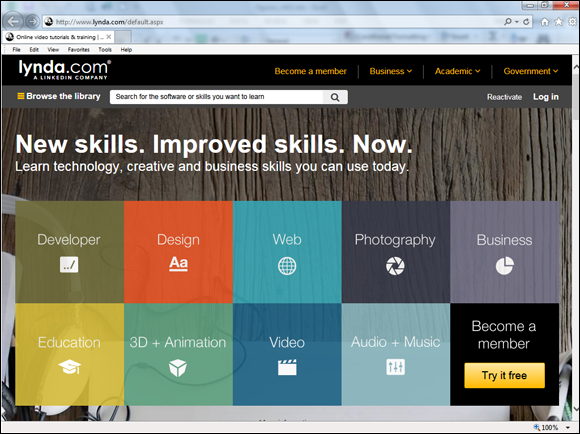
FIGURE 3-2: Lynda.com supplies course content under the membership model.
Peer-to-peer e-commerce site model (a community of makers or freelancers)
A peer-to-peer e-commerce model allows people with similar skills to access a business framework to display and sell their goods or services. This framework allows people to avoid having to set up their own shopping carts and customer-service mechanisms. A successful example of this model is Etsy (http://etsy.com), shown in Figure 3-3. Etsy has thousands of vendors who hand-make their goods.
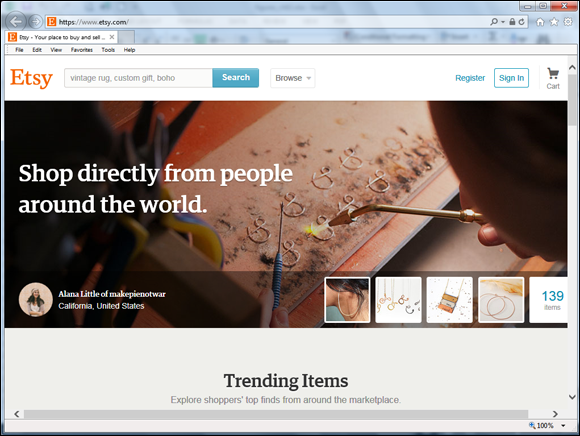
FIGURE 3-3: Etsy is a thriving example of the peer-to-peer e-commerce site model.
Online retail model
Online retailers are the model you’re most likely familiar with. A vendor offers goods available online and ships them to a buyer. The vendor may also have a group of vendors who supply his goods, which he then ships. One good example of this model is 1-800-FLOWERS.COM (http://1800flowers.com) shown in Figure 3-4, which provides flowers for all occasions. Before this type of vendor existed, you had to go to a florist and order flowers, which in turn had to be sent or referred to a local vendor.

FIGURE 3-4: The online retailer 1-800-FLOWERS.COM.
Service model
This online version of the service model is becoming very popular because it allows time-starved customers to order something they want and get it delivered quickly without having to leave their house. One example of this is Seamless (https://www.seamless.com), as shown in Figure 3-5. It’s your local take-out/pickup restaurant on a grand scale. You go to the site, enter your zip code, and choose food from local vendors. It’s all handled from one site. Then you have it delivered or you can get it yourself. Rather than have one option, you can choose from a variety of local options.
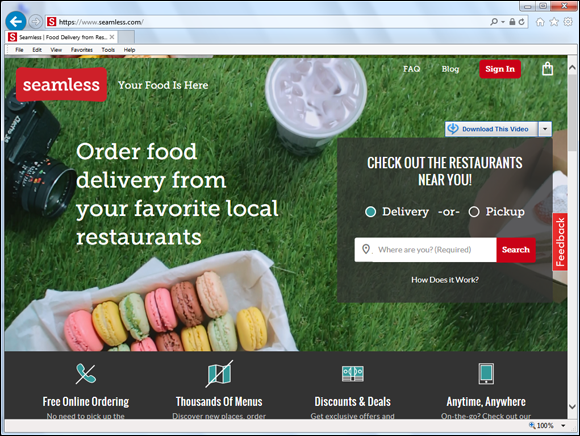
FIGURE 3-5: Seamless provides a food-delivery service.
Subscription model
The subscription model is not new, but the advent of the web has driven it to much greater heights. With this model, you join a site that offers ongoing access to something you want, and you typically pay a monthly or annual fee. One well-known example of this model is Netflix (http://netflix.com), shown in Figure 3-6. You can access the site’s content as long as you remain a member. It’s similar to the membership model, which requires you to pay a fee to have access to a club or site, but you might not have access to content.
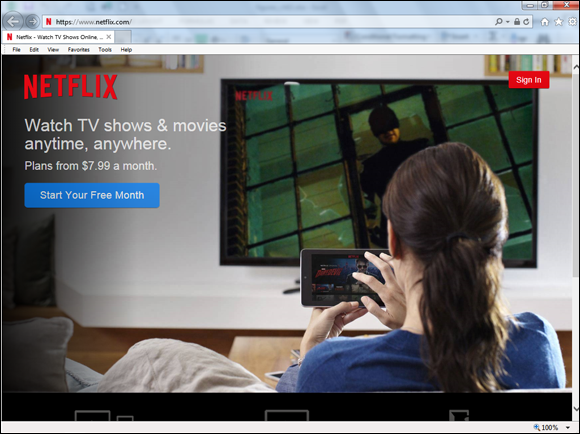
FIGURE 3-6: You pay a monthly fee to access all the content on Netflix.
Considering the freemium model
Another business model worth noting is the freemium model, which is used for online software products. Companies who use this model provide a free version of their software with the expectation that some customers will want to pay for a premium version. Some business owners are leery of this model because it involves a risk that doesn’t apply to a standard retail model. Instead of having customers pay as they go, you need to have the strong conviction that some customers will upgrade.
You should consider a freemium model if you’re convinced that
- Your product is integral to a business process. Tools that make it easy for a user to do tasks that are part of her daily routine have a good chance of succeeding. Examples of such tasks are storing and sharing files. Dropbox (
http://Dropbox.com), shown in Figure 3-7, gives you a free account and charges for additional storage space. - Your paying customers will be able to support the nonpaying ones. In this case, a good example is LinkedIn (
http://linkedin.com), shown in Figure 3-8, which provides a variety of career search services in addition to a free networking service. - You can provide quality customer service to all customers, not just the premium owners. An example of this is Evernote, the information storing and organizing platform (see Figure 3-9). The Executive Chairman of Evernote, (
http://evernote.com) Phil Libin, has been quoted as saying, “The easiest way to get one million people paying is to get one billion people using” (Fast Company). From the very beginning, he was prepared to give everyone who used Evernote a quality experience. Currently the company offers a free version, a Premium version, and a Business version.
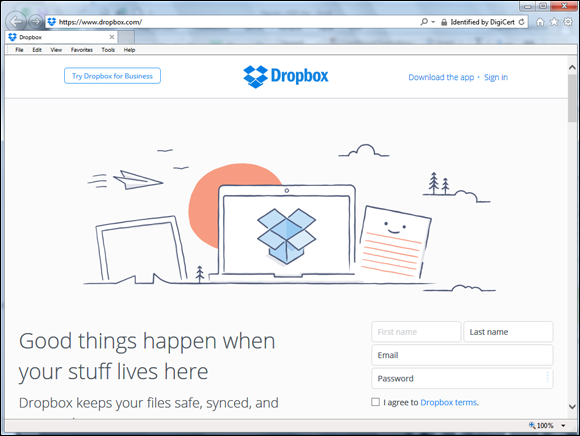
FIGURE 3-7: Dropbox offers a freemium service for storing and sharing files.
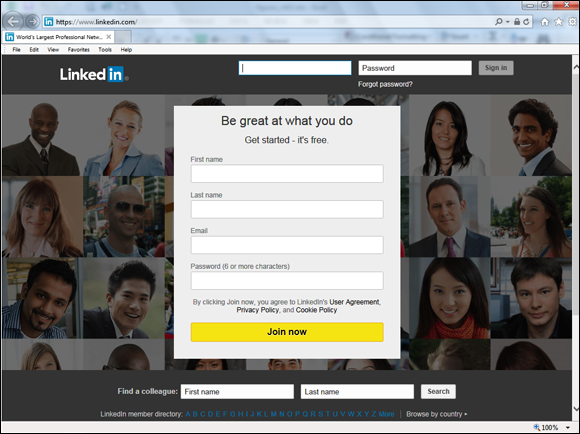
FIGURE 3-8: LinkedIn offers free and paid services.
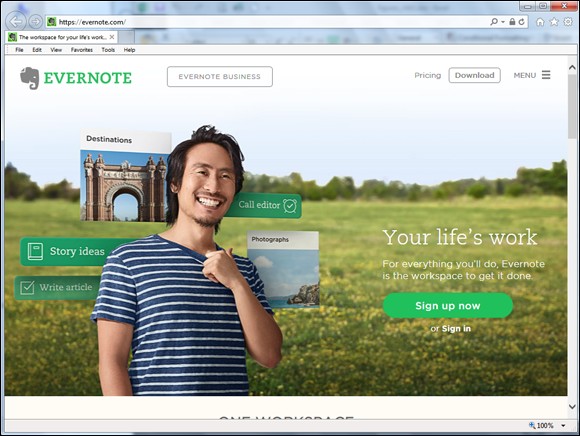
FIGURE 3-9: Be sure to add value to customers’ lives with your free services, as Evernote strives to do.
Analyzing Your Business Model
Because of the availability of online tools, you have a great advantage when analyzing your business model. All sorts of visual software tools are available to help you figure things out. The most popular of all the business model tools is the one presented by Alex Osterwalder and Yves Pigneur in their book Business Model Generation.
The tool is called the Business Model Canvas, from Strategyzer (see Figure 3-10).To analyze your business model, you use a visual “canvas” to lay out all the components that make up your business. What makes the tool so powerful is that it prompts you to look at each part of your business and see how it works with the other parts to bring in revenue. To learn more about the business model canvas, you can go to https://strategyzer.com/canvas?_ga=1.164112764.256400004.1437491350.
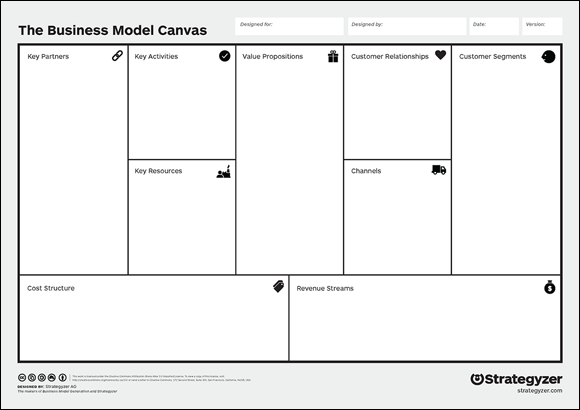
FIGURE 3-10: The Business Model Canvas from Strategyzer.
Here’s a brief look at the components you need to document on the canvas:
- Customer segments: List the clearly defined niches you serve.
- Value propositions: This term refers to what you provide to customers to solve their problems. What are the specific products and services you offer — the value you promise to exchange with your customers for their payment?
- Channels: List the communication (social platforms and so on), distribution, and sales channels you use to reach customers.
- Customer relationships: Describe what you do to maintain an ongoing relationship with each of the customer segments you serve.
- Revenue streams: List the ways you make money based on the products and services you offer.
- Key resources: Identify the resources you must have to run the business.
- Key activities: Name the actions you must perform to run the business.
- Key partnerships: Includes the vendors and partners you need to run the business.
- Cost structure: Includes all the money you need to spend (expenditures) to run your business.
Discovering Your Brand
At company headquarters, your brand is looked at and understood in a certain way. Often, it can be mixed up with the product itself. But your brand and your product are two distinct things. The product is created by your company. But your brand is created in the mind of your customer. It is what customers feel when they use your product, including whether they perceive that your brand is authentic. Because prospects can’t make a face-to-face determination about your company’s truthfulness and ethics, they rely on your content. An authentic brand is one that seems truthful, transparent, and cares about its customers’ satisfaction.
Benefitting from attention to your brand
Marty Neumeier, a recognized branding expert, says that a brand is “a person’s gut feeling, because brands are defined by individuals, not companies, markets, or the public.” As much as people like to think that they choose brands for logical reasons, all the research on brand choice says that they operate on emotions. It’s these emotions that you need to identify and respond to.
Branding is so important because it does the following:
- Helps you differentiate yourself from your competition. For example, several tablets are on the market, but in 2018, Apple held the majority share at 26.6 percent.
- Can live on while specific products may be phased out. The goodwill that comes with loving a brand isn’t easily destroyed.
- Helps customers talk about a brand to their friends and family. You want the social media army to actively recruit others.
- Creates loyal customers. Loyal customers are “money in the bank.”
- Is an asset. Although it seems intangible, brands have equity. Brand names help products get into retail stores and attract attention.
- Creates value for employees. Popular brands make their employees proud and encourage employee retention.
Try as you might, you don’t really influence what customers experience when they use your product. You may want them to feel really excited, but the customer might reply with a yawn. Unless you can refresh the brand in some significant way, it’s locked in customers’ minds in a particular way.
Knowing your current brand reality
Critical to understanding how to increase brand value is to understand what your customers think about your brand today. This is something you don’t want to be guessing about. You can’t improve something unless you establish a baseline.
So what can you do to create a twenty-first century brand that delights customers and encourages growth? Roxana Strohmenger, Tracy Stokes, and Chelsea Hammond at Forrester Research, created what they call the TRUE Brand Compass Framework.
What makes a brand TRUE? It should be
- Trusted: Is transparent with its customers, including showing its flaws
- Remarkable: Gets people talking about the brand
- Unmistakable: Creates a category of one (no one competes with it)
- Essential: Is irreplaceable in your customers’ lives
These measures can be a recipe for evaluating what your current brand reality is and how you can redirect your actions. The following table provides some questions you can ask yourself.
|
Measure |
Questions to Ask |
|
Trusted |
Do our customers think of us as trustworthy and transparent? What evidence do we have of that? What are we doing to reinforce our brand’s authenticity? |
|
Remarkable |
Do our customers find us worth discussing with their friends? What evidence do we have of that? What are we doing to make it easy for customers to tell about their great experiences with us? |
|
Unmistakable |
How well do we differentiate ourselves from the competition? What evidence do we have of that? Can we list our competitors and describe the ways we are different? |
|
Essential |
Do we have a place in our customer’s everyday life? What evidence do we have of that? What can we do to make our products become part of a customer habit? |
Solidifying the Look of the Brand
So far in this chapter, you’ve learned about issues surrounding what your customers and employees think about your brand. Now it’s time to look at what they see. Chances are, when you visualize a brand, you either see the product in your mind, like the iconic Coke bottle, or a logo, like the Nike swoosh. A great deal of time and effort goes into establishing the look of the brand, and companies don’t always get it right.
Considering design components
Design and color play a tremendously important role in the branding of a company. Every year, companies spend millions of dollars to update and refresh their brand. Here are the design elements that distinguish a brand:
- Tagline: A tagline can help your potential customer understand the essence of your brand. Think American Express’s tagline “Don’t leave home without it.” American Express wants its customers to feel that their credit card is essential to their everyday life.
- Design: Design of online properties is a critical component of branding because it can convey a sense of modernity (good) or irrelevancy (not good!). Also key nowadays is a design that allows mobile devices to display the design correctly on smaller screens.
- Logo: As you see in the sidebar about logos, a logo can be critical to a brand. But don’t think that it must be complex. Actually, simpler is often better. Consider the IBM logo (
http://ibm.com), shown in Figure 3-11. It’s nothing fancy, but it has stood the test of time. - Icon/avatar: This is the little design that you see in the upper left of a browser page or website. Because the icon or avatar is viewed so often, it makes a lasting impression. Don’t overlook its importance.
- Graphics and photos: Visuals communicate ideas that you can’t express in words. Your graphics are very important, so stay away from stiff stock photos and clip art.
- Fonts: Fonts are the lifeblood of brands, but people don’t think about them. They just accept the feeling they convey. If you think of iconic fonts, you’ll arguably find none more iconic than Disney’s (
http://disney.com), shown in Figure 3-12. No company would dare use something remotely similar for fear of confusing its customers or legally infringing on the rights of the particular brand. - Color: Color sets the mood for brands. Very few brands have done a better job of pairing a color with the idea of luxury than Tiffany and its little blue box (
http://tiffany.com).

FIGURE 3-11: The IBM logo is simple but classic.

FIGURE 3-12: The iconic Disney font.
Using a digital asset management tool
Digital asset management (DAM) companies provide a tool to help you manage your brand assets online. DAMs provide a central repository for company assets such as documents, photos, and videos. If you have a small shop, you may not need a system like this. But if you have multiple assets and multiple locations, using a tool like this can be a productive way to help your employees manage their work.
WebDAM (http://www.webdam.com/), owned by Bynder, shown in Figure 3-13, is a well-known digital asset management company. It has a cloud-based system that makes it easy for your employees to manage your brand assets from anywhere.
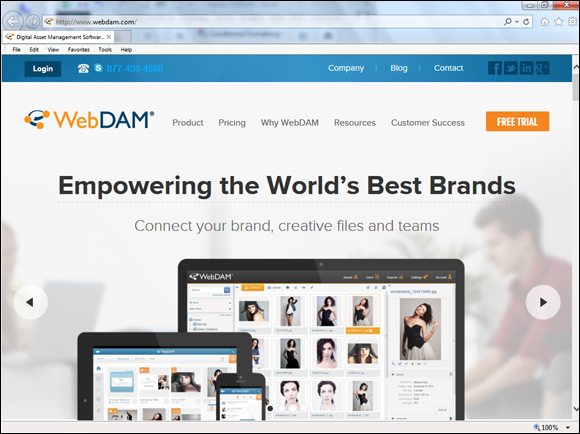
FIGURE 3-13: WebDAM.
IntelligenceBank helps companies manage digital assets (see Figure 3-14). The company, which is noted for its pleasing visual interface, provides a calendar and planner (http://www.intelligencebank.com/).
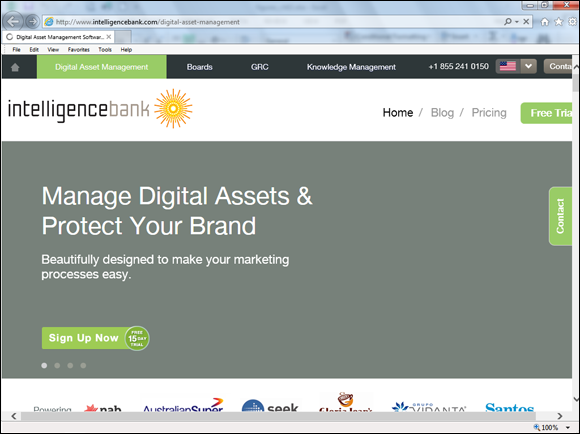
FIGURE 3-14: IntelligenceBank.
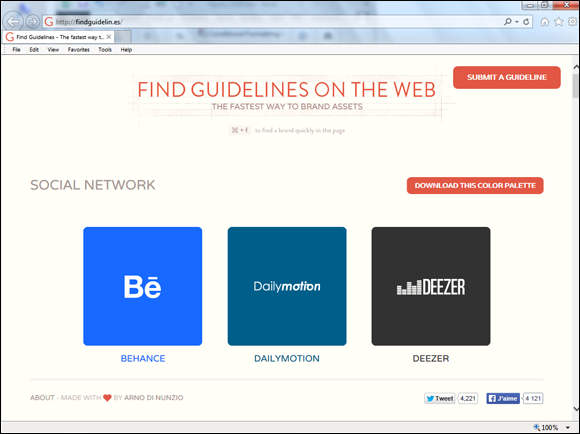
FIGURE 3-15: Find Guidelines on the Web.
Developing Success Measures for Your Brand
Management expert Peter Drucker famously said, “What gets measured gets done.” In the case of branding, you’re dealing with a set of measurements about your brand from which you must extract conclusions. The measures that you use to evaluate your brand are tied to customer perceptions and the actions you take to fortify them.
Unlike measuring the number of followers or the amount of Likes you get, these measures are a bit more complex. You have to determine whether the actions you take support, advance, and enhance your brand.
Brand measurement can be a bit complex. Book 9, Chapter 1 looks at the fifth of the Five Cs (see Book 1, Chapter 1 for a list of the Five Cs), called check-back analysis. This term refers to the notion that for every measure you look at, you should look back to evaluate the data you collected and possibly revise it. With all the data available, you should mine it for information that will actually increase the likelihood of success.
If you are new to digital marketing, it makes sense to develop some gross brand measures that you know are available and can be evaluated. Following are some possible measures to choose from. Many measures are available; these are just suggestions:
- General company measures: Market share; ROI; gross revenue
- Brand awareness: Reach; engagement with social media
- Brand loyalty: Retention; frequency of purchases
Producing Engaging Branded Content
Next you look at branded content. You want to know how to create content that solidifies your brand awareness. After you have all your brand elements in place, you need to communicate them at every customer touchpoint.
Marc Blanchard, Global Head of Experience Design at Creative Agency Havas Worldwide (http://havas.com/) proposed a great framework to help analyze brand engagement. You can use this framework to figure out how to develop custom content for brand engagement. The model prompts the following questions:
-
Exposure: What kind of content would you like potential customers to see when they meet your brand?
Unfortunately, you can’t control how a prospect first sees your brand. With all the social platforms, landing pages, and messaging tools available, you just hope they find you. But you should give some thought to the possible touchpoints. You can look at a few basic venues to determine what your customers will see. Those venues are Google search results, your main website, and your brand pages on all the social platforms. Make sure that all the platforms are cohesively branded and convey the standards that you hold for your brand.
Content suggestions: The content you create for brand exposure should introduce your potential customer to the solutions you offer. Develop content like webinars, ebooks, and thought-leader posts that clearly present the value of your product or service. Demonstrate that you have a community of satisfied customers that you would like prospective customers to join.
-
Response: What customer emotion does your content trigger?
What do you want your prospects to feel after they learn about you? Determine what content you need to create to get your prospect moving in your direction and away from your competitors.
Content suggestions: Offerings such as comparison charts, demos, and free trials help customers invest time and effort in you.
-
Experience: How do you help customers convince themselves that the experience you have makes you an expert?
You know that your customers will make an emotional decision about you and convince themselves that it was a rational one. Make sure to provide anything customers might need to feed both the emotional and rational sides.(See Book 3, Chapter 4 for more details about customer motivation.)
Content suggestions: Convincing content can be testimonials that speak to people’s emotional side as well as data sheets with features and benefits that assuage the needs of the logical side.
-
Outcome: What action do they take?
You have an intended outcome in mind. Make sure that it’s clear to your prospects what you want them to do next. Although you wish otherwise, you may not get them to buy without taking smaller steps first to get to know you.
Content suggestions: Create things like free lead generators (information in exchange for something) and free newsletter subscriptions to get them to give you an email address or perform another action, such as attend a webinar.
Monitor how well the content performs, and increase your use of ones that make a difference.
 Christensen classifies the reasons for customers to buy as your brand purpose. He recommends naming your product after that purpose so that customers will know that your product meets their needs.
Christensen classifies the reasons for customers to buy as your brand purpose. He recommends naming your product after that purpose so that customers will know that your product meets their needs. According to Loyalty360 (
According to Loyalty360 (